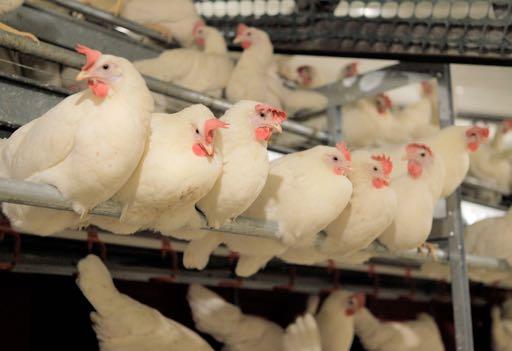
2 minute read
What people say they prefer: Cage-free eggs
By Scott Mcfetridge
The Associated Press
DES MOINES, IOWA » Without much fuss and even less public attention, the nation’s egg producers are in the midst of a multibillion-dollar shift to cage-free eggs that is dramatically changing the lives of millions of hens in response to new laws and demands from restaurant chains.
In a decade, the percentage of hens in cage-free housing has soared from 4% in 2010 to 28% in 2020, and that figure is expected to more than double to about 70% in the next four years.
The change marks one of the animal welfare movement’s biggest successes after years of battles with the
CALABASAS food industry. The transition has cost billions of dollars for producers who initially resisted calls for more humane treatment of chickens but have since fully embraced the new reality. Pushed by voter initiatives in California and other states as well as pressure from fast food restaurant chains and major grocers, egg producers are freeing chickens from cages and letting them move throughout hen houses.
“What we producers failed to realize early on was that the people funding all the animal rights activist groups, they were our customers. And at the end of the day, we have to listen to our customers,” said Marcus Rust, the CEO of Indianabased Rose Acre Farms, the nation’s second-largest egg producer.
Josh Balk, vice president for farm animal protection at the Humane Society of the United States, noted the abruptness of the about face.
This is “an entire industry that at one point fought tooth and nail not to make any changes,” he said.
To a great extent, the industry concluded it didn’t have another choice.
Beginning in about 2015, McDonald’s, Burger King and other national restaurant chains as well as dozens of grocers and food manufacturers responded to pressure from animal welfare groups by announcing their commitment to cagefree eggs. That was followed by laws requiring cage-free housing in California and similar rules in at least seven other states — Colorado, Massachusetts, Michigan, Nevada, Oregon, Utah and Washington.
McDonald’s, which buys about 2 billion eggs annually, said it gradually shifted to cage-free after concluding it was desired by customers.
Many companies widely promoted their move to cagefree as good for their brand’s image.
Earlier, animal welfare groups, especially the Humane Society, had organized shareholder campaigns, conducted undercover investigations of chicken farms and filed federal complaints. A Gallup poll from 2015 found that nearly twothirds of Americans thought animals deserved protection from harm and exploitation.
Animal rights groups have made allowing animals room to move a priority in their campaigns but the results have been mixed. The pork industry is fighting to block the California initiative that required more space for breeding pigs and veal calves, and a state judge recently delayed implementation of new rules.
The egg industry also initially sought national stan-









